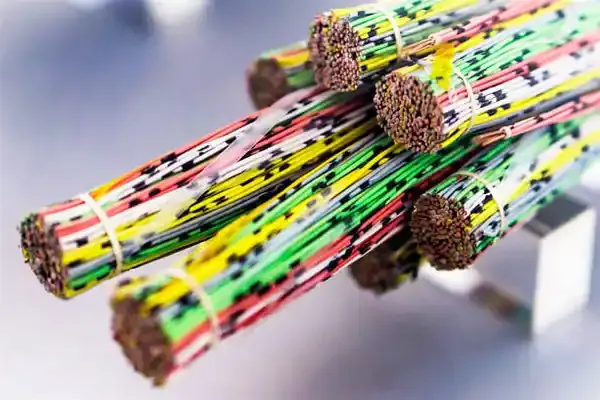Introduction
Fiber color coding is crucial in telecommunications, providing a systematic method for identifying and managing fiber optic cables within networks. This article delves into the fundamentals of fiber color coding, exploring its history, significance, and standardization across the industry. By understanding the principles and practices of fiber color coding, telecommunication professionals can enhance network efficiency, streamline troubleshooting processes, and ensure optimal performance of fiber optic systems.
Definition of Fiber Color Coding
Fiber color coding is like the secret language of cables, using different hues to identify the different fibers in a network. It's like a rainbow roadmap for your data to travel on. Back in the day, fiber color coding was as wild as a disco party, with no set rules. But over time, industry standards emerged, making it easier for everyone to speak the same colorful language.
Importance of Fiber Color Coding in Telecommunications
i. Enhancing Network Efficiency
Imagine trying to find a needle in a haystack without a magnet. That's what it's like troubleshooting a network without fiber color coding. It's like giving each fiber its shining spotlight on the stage.
ii. Facilitating Easy Identification and Troubleshooting
When your network decides to throw a tantrum, fiber color coding is your superhero cape. It helps you quickly spot the problematic fiber and save the day without needing a crystal ball.
Standard Fiber Color Coding Systems
i. TIA/EIA-598-A Color Coding Standard
The TIA/EIA-598-A standard is like the fiber color coding rulebook, ensuring everyone plays by the same colorful rules. It's the blueprint that keeps the chaos at bay.
ii. International Color Coding Standards
Just like a multinational potluck, different regions have their flavor of fiber color coding standards. But at the core, they all aim to make everyone's fiber-filled lives a little easier.
Understanding Fiber Optic Cable Color Codes
It's like decoding a colorful puzzle when you understand fiber optic color codes. Each combination tells a story, guiding your data like a traffic signal at a chaotic junction.
Differentiating Between Single-mode and Multimode Fibers
Single-mode and multimode fibers may sound like fashion trends, but their color codes tell a different story. It's like knowing your espresso from a latte just by looking at the color of the cup.
Best Practices for Implementing Fiber Color Coding
i. Proper Documentation and Labeling
When it comes to fiber color coding, it's essential to keep things organized like your sock drawer. Proper documentation and labeling are your BFFs here. Make sure to create clear and detailed records of your color codes and label each fiber with its corresponding color. Think of it as giving each fiber its fashion statement!
ii. Training and Education for Technicians
Just like teaching your grandma to use emojis, training and education for technicians are crucial. Ensure that your tech team knows their red from their green regarding fiber color coding. Providing regular training will keep them sharp and ready to tackle any fiber-related mysteries.
Troubleshooting and Maintenance of Fiber Optic Networks
i. Common Issues and Solutions
Fiber optic networks can sometimes be as finicky as a cat with a hairball. Knowing common issues and solutions is key to keeping your network purring like a content kitty. Be prepared to troubleshoot like a pro from signal loss to fiber damage.
ii. Tools and Techniques for Maintenance
Having the right tools for fiber network maintenance is like having a trusty sidekick by your side. Invest in quality equipment and stay updated on the latest techniques. Remember, a well-maintained network is a happy network!
Future Trends in Fiber Color Coding Technology
i. Advancements in Color Coding Schemes
The world of fiber color coding is evolving faster than a TikTok dance challenge. Stay ahead of the game by watching for advancements in color-coding schemes. Who knows, we might even see holographic rainbow fibers in the future!
ii. Integration with Automation and AI Technologies
Imagine a world where fiber color coding is seamlessly integrated with automation and AI technologies. It's like having a personal assistant who knows exactly which fiber goes where. Embrace the future where technology and color coding join forces for a harmonious fiber dance.
Conclusion
The adoption of standardized fiber color coding systems is essential for maintaining the integrity and efficiency of modern telecommunications networks. By adhering to best practices in implementing and interpreting fiber optic cable color codes, organizations can minimize downtime, enhance troubleshooting capabilities, and pave the way for future advancements in fiber optic technology. As the industry continues to evolve, a solid foundation in fiber color coding will remain a cornerstone of effective network management and maintenance.










0 Comments